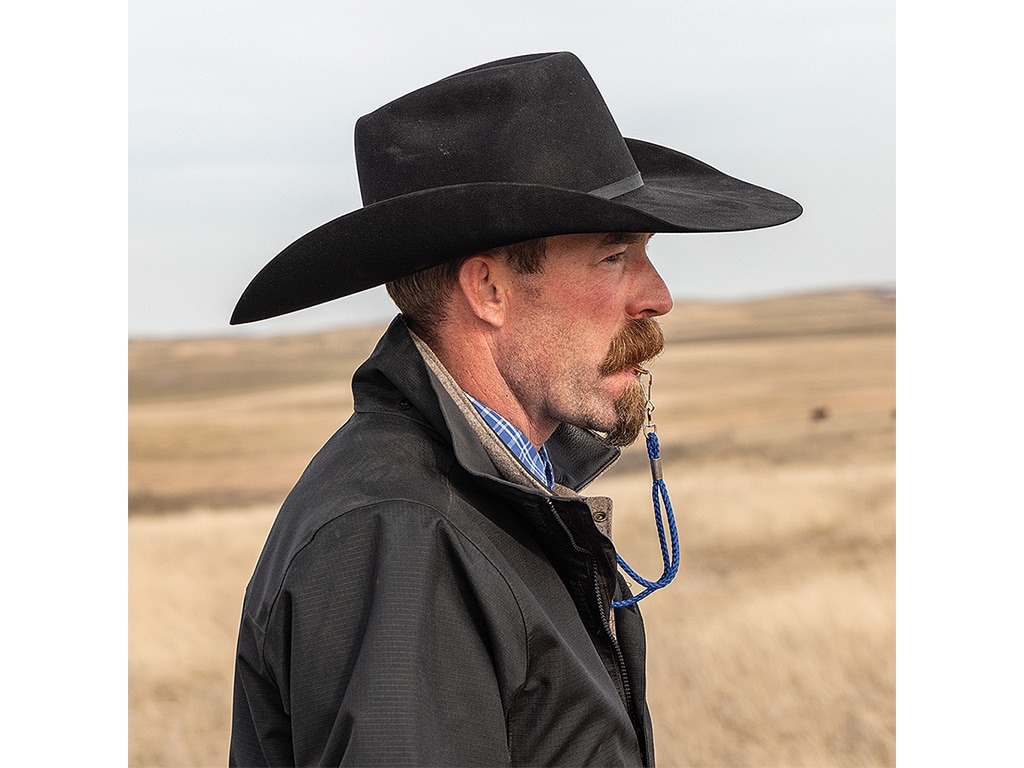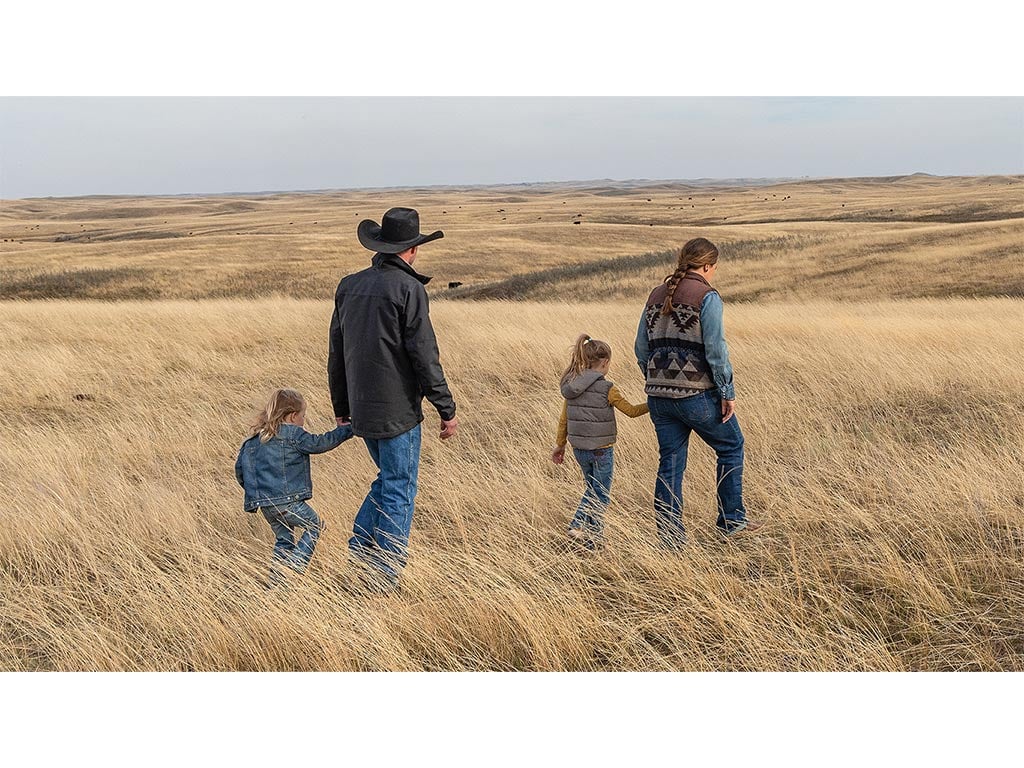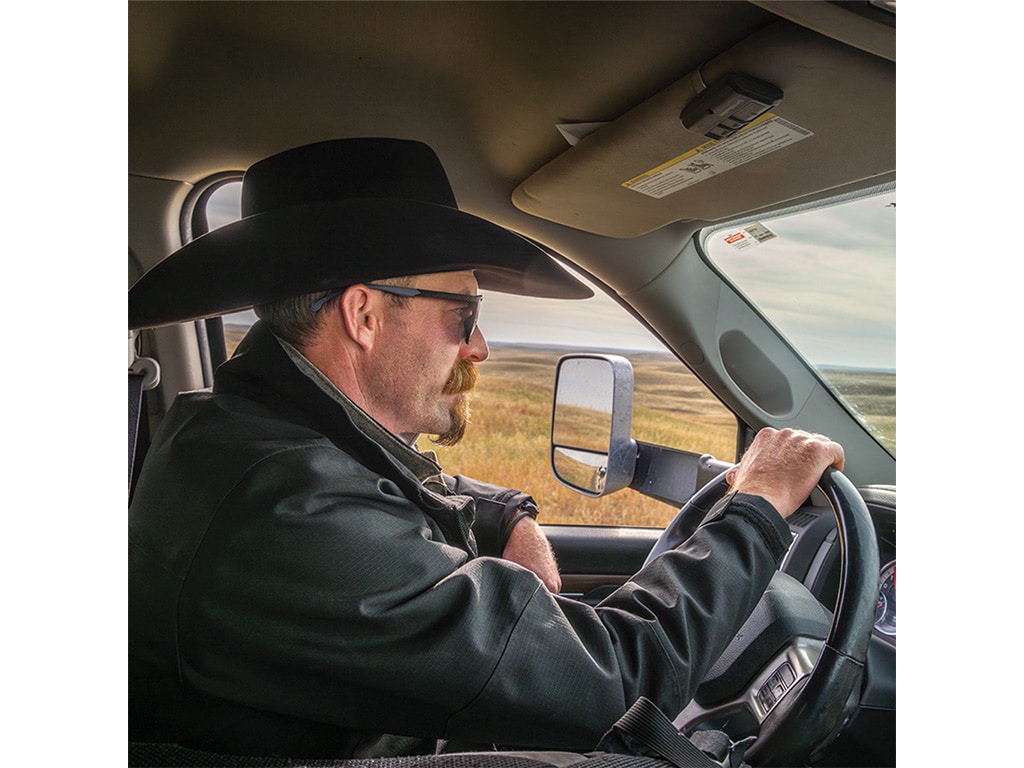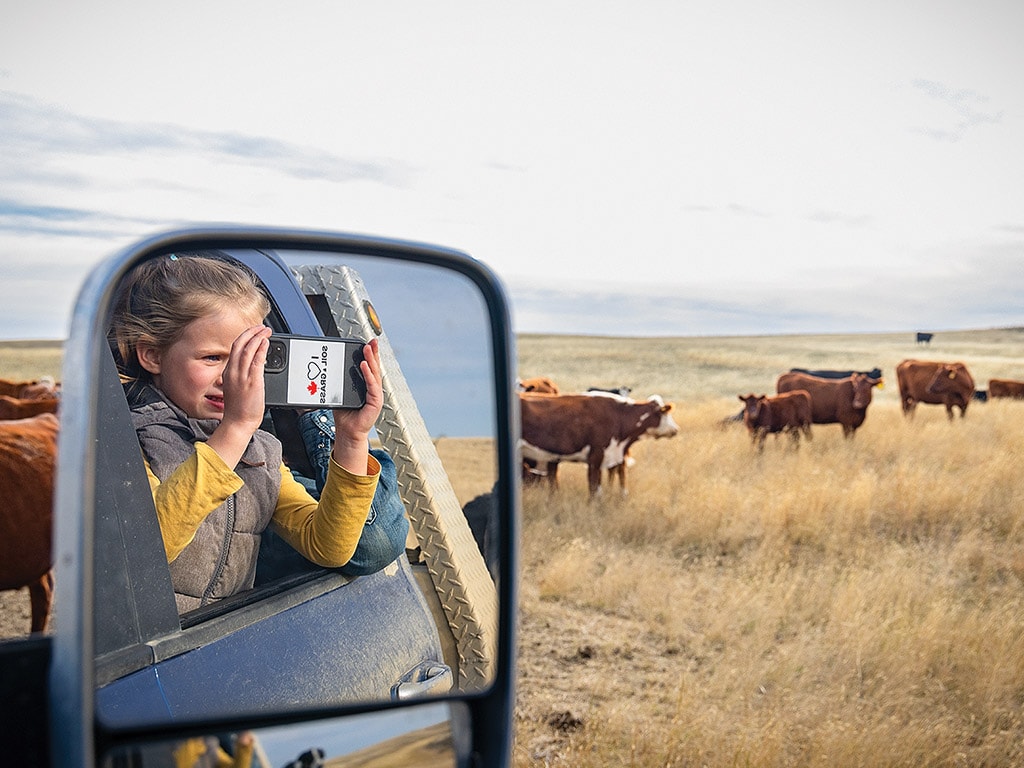Agriculture, Livestock/Poultry April 01, 2025
Home on the Plains
BC couple chases their ranching dream in Saskatchewan.
by Lorne McClinton
Erika and Cyle Stewart, Saskatchewan's 2024 Outstanding Young Farmer award winners, did something few Canadian producers ever do; they relocated their ranch to a new province. In 2017 the couple sold their 100,000-acre lease open range cow-calf operation in British Columbia and bought a 5,440-acre ranch in Saskatchewan. Most British Columbians couldn't imagine giving up the scenery of the Coquihalla Pass for the prairies near Morse, Saskatchewan, but the couple is certain it was the right move for them.
"Our range in BC was located right along both sides of the Coquihalla Highway south of Merritt," Erika says. "When I was growing up we could move cows around all these beautiful lakes and never see a soul. But over the last 15 years there's been this big influx of people everywhere. We gave up trying to move cows from Friday to Monday. We had quads tearing up the grasslands and cows getting shot. It was just getting too hard to fight it."
"Erika has been active in the Canadian Cattlemen's Young Leaders program and got to know a lot of people from Alberta and Saskatchewan," Cyle says. "We started to get interested in moving because they had a lot of herd management options that we really didn't. The biggest was they could pull their bulls to tighten up their calving window. We just couldn't do that in an open range operation like we had."
The move also would let them implement an adaptive multi-paddock grazing system. They could turn the cattle out on 20- to 30-acre paddocks and move them every three to five days. That's not possible in an open range system unless someone stays out on the range with the cattle all season.
"We started looking for a ranch to buy all over Saskatchewan in 2011 but nothing ever worked out," Erika says. "Then [in late 2016] our [BC] place sold right away. We had to be out of there by April and didn't have any place to take our 300 cows to. Before we found this place in February, we were getting worried."
Above. The couple is making a big push to improve their soil quality to improve their profitability. They use short rotations through small paddocks to produce more pounds of beef per acre. The couple has had a steep learning curve made worse by a seven-year drought. However they believe they've turned the corner. Profits are rising and they have more time to enjoy ranch life with their daughters.
Big changes. The move required a big adaptation for both the couple and their cattle. During their first summer the cattle just kept walking laps around the fences because they couldn't grasp what they were.
It didn't help that their move coincided with the start of a seven-year drought. They went through a steep learning curve trying to find which of their BC management practices worked in Saskatchewan—and which ones didn't.
Silage worked well in BC where they had irrigation and lots of water but their yields kept it from being economical at their new home. In their best years they weren't putting up enough feed for the winter. But if that wasn't working, what practices could they use to manage their grass better and improve their soil health.
One thing they did was implement an extensive winter bale-grazing program. They place bales in areas with lots of bare soil and hopefully the extra organic matter and added fertility will make their land more productive, and it should improve their profitability. They also have both been enrolling in many courses to gain new insights into how to manage their operation.
"We switched to smaller paddocks and shorter rotations in 2024," Erika says. "That's producing more pounds per acre and giving our native grassland longer rest periods. Electric fences have made such a huge difference in our operation. We also just finished installing a three-mile water pipeline for our grazing program so we can easily put water in many more fields. This is where having all the ranch in one big block is a real benefit."
"We traditionally started calving here on April 1st, but the weather has been so bad that we pushed it to April 25th this year and we might even move it more into May," Cyle says. "It should better match the grasses' nutritional content with the cows' nutrient requirements while they're calving and producing milk.
"The weather was a big adjustment," Cyle says. "It could be -25°C in both places but in Saskatchewan you'll have a 40K wind which makes it seem like -35°C. Drifting snow was something to get used to, it doesn't fall flat here, it flows."
"Water availability was another thing," Erika says. "We never gave water a second thought in BC. The Coldwater River's headwaters were on our range and ran right through the whole ranch. You could drill a well and find good clean water anywhere. Here you have to always keep an eye on your water quality."
While the couple went through a few tough years, they think they've turned the corner. Now they believe both they and their cattle have adjusted to the new climatic conditions. Their profits are up and perhaps as importantly they are finding they now have more time to enjoy ranch life with their young family. ‡
Read More
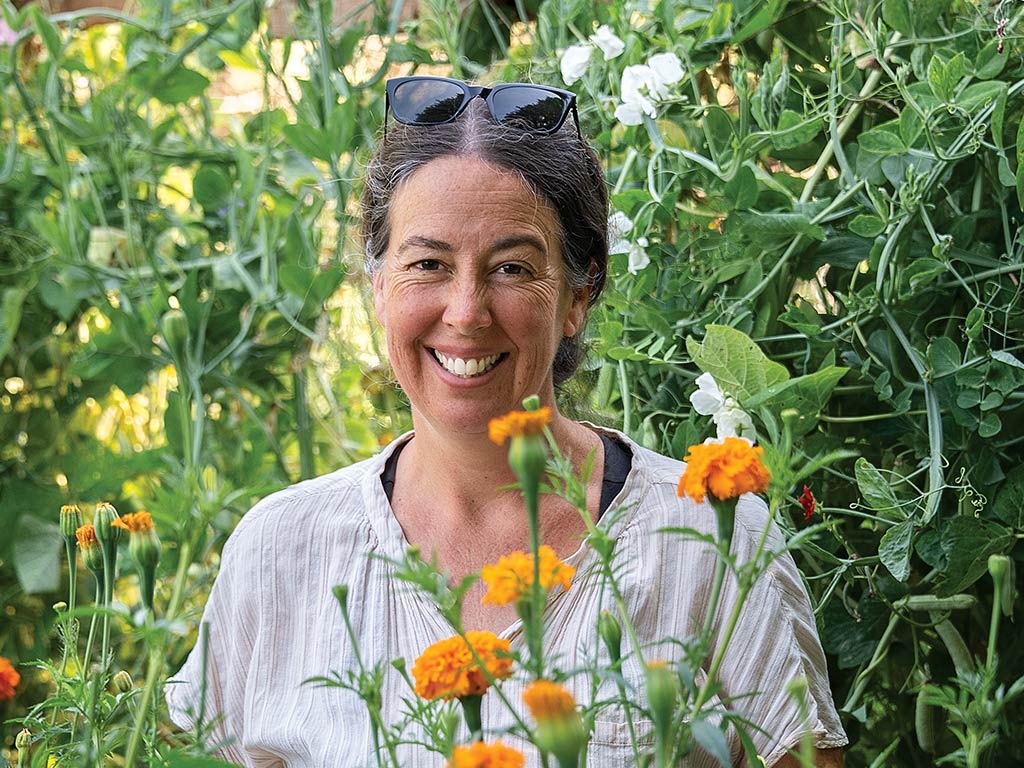
AGRICULTURE, EDUCATION
Connected by a Thread
Fibershed ties together regional economies.

AGRICULTURE, SPECIALTY/NICHE
As Fresh as it Gets
Luxury Charlevoix hotel establishes its own farm.


